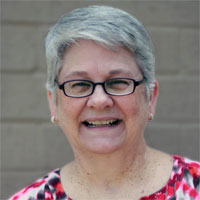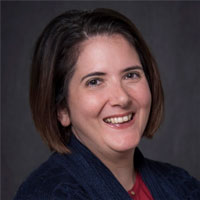Occupational Therapist & Counselor
Counseling Schools Search
When you click on a sponsoring school or program advertised on our site, or fill out a form to request information from a sponsoring school, we may earn a commission. View our advertising disclosure for more details.
“Our aim as occupational therapists is to help all people participate in necessary and meaningful activities of life…Because we view OT practitioners as teacher-facilitators, our students learn to ‘come alongside’ their clients to assist them in developing life skills rather than dictating to them how they ‘ought to live.’”
Nancy Fowler, OTD, Admissions Counselor and Instructor, School of Occupational Therapy at Brenau University
Don’t be confused by the word “occupational” in the occupational therapist and counselor title: While an occupational therapist (OT) does help people with work and careers, the actual job goes far beyond that. According to the American Occupational Therapy Association (AOTA), occupational therapy “helps people across the lifespan to do the things they want and need to do through the therapeutic use of daily activities (occupations).”
Occupational therapists and counselors work with the mental and physical health challenges that people may face following an illness or injury. For instance, common occupational therapy situations may include helping to create a plan and a routine to allow children with disabilities to participate fully in school and social situations or helping someone who has experienced an injury return to their work or home life despite any physical or cognitive changes that may have occurred.
Occupational therapy services typically include working with an individual to create a plan that is unique to their needs. That plan would include goal-setting and then evaluating progress to ensure that those goals are met.
According to the U.S. Bureau of Labor and Statistics (2025), the field of occupational therapy is growing rapidly. Between 2023 and 2033, the BLS predicts that openings in occupational therapy will swell 11 percent nationally, which is predicted to be much faster than the average for all occupations during the same timeframe (4 percent). The BLS also reports that the need for occupational therapists and counselors will continue to increase due to the need for treatment for people with various illnesses and disabilities, an aging population, and for the treatment of many conditions such as arthritis and stroke or chronic conditions such as diabetes.
Read on to discover how to become an occupational therapist or counselor, including details on degree programs, professional certification, and salary prospects.
Ask an Expert: Nancy L. Fowler, OTD, OTR/L

Dr. Nancy Fowler is the admissions counselor and an instructor in the Ivester College of Health Sciences within the School of Occupational Therapy at Brenau University in Gainesville, Georgia. She received her bachelor’s in social sciences and master’s education in rehabilitation counseling from the University of Georgia in Athens, Georgia. She received her master of science in occupational therapy and doctorate in occupational therapy from Brenau University.
Dr. Fowler’s practice expertise is in promoting health, independent living, and fall prevention for older adults. Her research interests include maintaining independent living in older adults, fall prevention, and interprofessional education. Her published work includes Upstream Living: Occupation-Based Health Promotion for Community- Dwelling Older Adults, a special interest publication published by the American Occupational Therapy Association to promote productive aging.
CounselingSchools.com: What are some of the core values or philosophies that guide the occupational therapy curriculum?
Dr. Fowler: Our aim as occupational therapists is to help all people participate in necessary and meaningful activities of life. We view the client as an agent of change, so our students are taught a client-centered practice. Because we view OT practitioners as teacher-facilitators, our students learn to “come alongside” their clients to assist them in developing life skills rather than dictating to them how they “ought to live.” We value occupation-based practice with occupational participation as both the goal and the means to that goal. So, our students learn to provide service based on the actual performance of life tasks preferred by the client. They also assist clients to participate in (or to develop) the meaningful activities of their daily lives through evidence-based and culturally relevant practice.
Our curriculum is designed to guide students to become excellent practitioners in diverse settings using effective professional reasoning to engage in innovative, ethical, science-driven, and culturally relevant therapeutic practice; to value lifelong personal and professional growth for themselves as OT practitioners and to share a commitment to contribute to the wider body of professional knowledge through scientific endeavors and scholarship; and to provide transformative leadership and advocacy at the local, state, national, and international levels within the profession and society at large.
CounselingSchools.com: How does the program support students’ professional development and career placement after graduation?
Dr. Fowler: The development of a professional identity is a core value that is presented and practiced throughout the OT curriculum. Our faculty models professional behaviors in their interactions with students and helps students understand what it means to be a professional OT through class discussions and other opportunities.
Students are required to be members of both state and national associations and are encouraged to attend annual conferences as students. Many present thesis or capstone information at these conferences. In their last semester, our students have a course in professional development planning.
In addition, students connect with current OT professionals during their fieldwork experiences. Many students receive job offers at these sites even before they graduate. Further, we maintain a job board where current opportunities are posted for graduating students and alums. As the admissions counselor, I receive multiple weekly emails with job opportunities both in and outside of Georgia.
Ask an Expert: Leslie E. Bennett, OTD, OTR/L

Dr. Leslie Bennett, OTD, OTR/L, is a graduate of Russell Sage College and earned her doctorate in occupational therapy from Creighton University. Her doctoral research, “A Question of Ethics: Productivity standards and their impact on patient quality of care outcomes” is linked to her work in completing her master’s certificate in health care ethics at Creighton University. She has an interest in ethics, community health, and wellness. Her primary teaching has been in neuroscience, community occupational therapy practice, and adult occupations.
Dr. Bennett is the chair of the American Occupational Therapy Association Ethics Commission and is an associate professor and the academic fieldwork coordinator for the occupational therapy program in the School of Health Sciences at Russell Sage College in Troy, New York.
CounselingSchools.com: What types of careers do graduates typically pursue after completing the program?
Dr. Bennett: Our graduates pursue occupational therapy careers in hospitals, nursing homes, rehabilitation settings, outpatient settings, disability services programs (BOCES/ARC), school-based OT, or pediatric settings. After a couple years, some may graduate to director of rehabilitation positions.
CounselingSchools.com: What sets this program apart from others in terms of preparing students for occupational therapy careers?
Dr. Bennett: We have a strong focus on all three areas of OT practice: physical rehabilitation, pediatrics, and mental health. Students are provided with five in-person fieldwork rotations that include all areas of practice. The support services we have on campus for students and faculty are invaluable to addressing student needs, especially with the growing mental health needs.
Most of our OT faculty have been trained in mental health first aid and we have a THRIVE initiative on campus that supports students and faculty/staff and their well-being. I think this is a strong asset at this stage. Additionally, one of our OT faculty was the leader in establishing the Okanagon Charter at our school which guides health promotion and well-being.
Education of an Occupational Therapist & Counselor
Occupational therapists need at least a master’s degree, and they must be licensed in order to practice. Each state’s rules for the licensure of counselors and therapists can be slightly different, so it is recommended that anyone who is interested in the education of an occupational therapist and counselor should check with the counseling licensure board to ensure that their educational plan meets the requirements in the state in which they wish to reside and practice.
In general, a prospective occupational therapist and counselor would complete a bachelor’s degree in a field compatible with counseling and therapy, such as social work, psychology, or a related counseling field. Most occupational therapists are not employable until they have achieved at least a master’s degree in occupational therapy.
Graduates will have the most success finding employment if they choose programs that are accredited by the Accreditation Council for Occupational Therapy Education, part of the American Occupational Therapy Association. ACOTE currently accredits or is in the process of accrediting 670 occupational therapy and occupational therapy assistant educational programs in the United States, its territories, and the United Kingdom.
Admission to graduate programs in occupational therapy generally requires a bachelor’s degree, generally with a minimum cumulative undergraduate GPA requirement along with and specific coursework, including biology and physiology. Many programs also require applicants to volunteer or work in an occupational therapy setting for a specific number of minimum hours. Candidates should contact the program that they are interested in attending about specific requirements.
Master’s programs usually take two to three years to complete, though many today offer online or hybrid options and in-person schooling. If the school the candidate wishes to attend requires GREs or other graduate entrance exams, studying for and preparing for that exam can add a few weeks to a few months to a candidate’s school timeline.
Some schools offer a dual-degree program in which the student earns a bachelor’s degree and a master’s degree in five years. Other schools allow part-time study, which would increase the time it takes to complete the degree. Some programs may also offer specific focuses, which generally require additional credit hours and may have other specific requirements to pursue. Achieving licensure also typically requires a period of post-degree supervised fieldwork. The amount of supervised field experience is different for each state, so the candidate is encouraged to check with their state’s requirements.
Supervised Hour Requirements for Occupational Therapists & Counselors
The AOTA accredits programs that provide two levels of fieldwork education: Level I and Level II. For Level I fieldwork, AOTA does not require a minimum number of hours. Each program sets its own requirements.
However, for Level II fieldwork, the AOTA standards require a minimum of 24 weeks full-time for occupational therapy students and a minimum of 16 weeks full-time for occupational therapy assistant students. While the Level II fieldwork can be completed full-time or part-time, it may not be less than half-time.
While AOTA sets the standards, it is up to each program to implement a timeline. For instance, the University of Oklahoma’s College of Allied Health offers a master of occupational therapy degree. This program consists of 80 semester hours of courses and includes 26 weeks of fieldwork to be completed in no more than five years. The fieldwork is done in the summer of year two and the summer, fall, and spring of year three.
Level I fieldwork is designed to introduce students to a variety of work environments and to develop a basic comfort level of working with clients. The student may work in various settings, including daycare centers, schools, neighborhood centers, hospices, homeless shelters, community mental health centers, and therapeutic activity or work centers.
Level II objectives, in general, are to increase competencies in working independently and to prepare counselors to actively participate in the process of helping their clients through developing and implementing treatment/intervention plans that address the needs of the individual.
The ACOTE standards indicate that Level I fieldwork requirements may be met through one or more of the following instructional methods:
- Simulated environments
- Standardized patients
- Faculty practice
- Faculty-led site visits
- Supervision by a fieldwork educator in a practice environment
Licensure and Certification Of Occupational Therapists & Counselors
All states require occupational therapists to be licensed. Licensing requirements vary by state, but all require candidates to pass the national examination administered by the National Board for Certification in Occupational Therapy (NBCOT). Only students who complete all fieldwork requirements in an accredited educational program can sit for the NBCOT exam.
If occupational therapists and counselors pass the NBCOT exam, they can use the title “Occupational Therapist, Registered” (OTR). They must also take continuing education classes to maintain certification (see more in the section below).
Specialty certification is also available through the AOTA for therapists who want to advance their knowledge in focused areas of practice such as low vision, driving and community mobility, environmental modification, school systems, and more.
Occupational Therapist & Counselor Licensure Renewal Requirements
Once licensed, occupational therapists and counselors must take continuing education classes to maintain certification. Each state’s counseling licensure requirements can be slightly different. In general, they consist of educational experiences within the occupational therapist’s core practice area, refresher courses, and experiential courses related to diversity and ethics.
In Oklahoma, the Oklahoma Medical Board licenses occupational therapists and their assistants (often called occupational therapy aides). To renew licensure, state candidates must complete continuing education credits from their approved list of occupational therapy-approved continuing education courses for the reporting period in question.
For Oklahoma, continuing education is due October 31 every even-numbered year, and candidates must obtain 20 hours of approved continuing education or equivalent points every two years. Points are the equivalent of one hour of participation, and candidates can earn points through the following methods:
- Attending workshops, in-services, seminars, or conferences
- Attending programs offered by or approved by the American Occupational Therapy Association or the Oklahoma Occupational Therapy Association or the National Board for Certification in Occupational Therapy
- Giving presentations on occupational therapy at workshops, seminars, conferences
- Giving guest lectures
- Authoring publications or an occupational therapy-related book
- Conducting research
- Attending college courses
- Attending self-study independent learning projects
- Achieving a specialty certification
- Association membership participation (such as committee participation)
By contrast, in California, occupational therapists and counselors are licensed by the State of California Board of Occupational Therapy. In California, OTs must obtain 24 units during the renewal period to renew an occupational therapy and counseling license. Licenses last for two years and expire at midnight on the last day of a therapist’s birth month in odd or even years, depending on the birth year.
To renew National Board certification, occupational therapists must earn 36 units during their three-year renewal cycle.
What Do Occupational Therapists & Counselors Do?
At its most basic level, an occupational therapist helps people overcome their physical challenges to adjust to or return to as full a life as possible. A debilitating injury or illness can limit people’s physical and mental functions, and an occupational therapist helps people figure out what they need to do to return to doing the things they want to or need to do in daily life. One of the rewarding challenges of this career is that each patient’s needs will differ.
Despite the name, occupational therapists are not focused on employment. The website OT Potential says people in this field do not help people get jobs. Instead, the name comes from a somewhat old-fashioned idea of occupation as something that “occupies” someone’s time. The OT uses interventions, technology, and equipment to help clients do what they want.
Occupational therapists and counselors can work in the following environments:
- Hospitals
- Schools
- Long-term care centers
- Outpatient facilities
- Home health care
- Academics
- Mental health care facilities
- In their own private practice
- In offices of physical or speech therapists or audiologists
- Nursing care facilities
- Pediatric practices
- Early intervention center (birth to age three)
How Much Do Occupational Therapists & Counselors Make?
These numbers represent figures from the U.S. Bureau of Labor Statistics from May 2024—the latest data available as of June 2025:
- Number employed in the U.S.: 152,280
- Average annual salary (mean): $98,240
- 10th percentile: $67,090
- 25th percentile: $80,490
- 50th percentile (median): $98,340
- 75th percentile: $110,460
- 90th percentile: $129,830
Occupational Therapist & Counselor Professional Associations & Resources
- American Occupational Therapy Association (AOTA)
- Association of Asian-Americans & Pacific Islanders in Occupational Therapy (AAPI-OT)
- National Black Occupational Therapy Caucus (NBOTC)
- Occupational Therapy Network for Native Americans (OTNA)
- Orthodox Jewish Occupational Therapy Chavrusa (OJOTC)
- Coalition of Occupational Therapy Advocates for Diversity (COTAD)
- American Speech-Language-Hearing Association (ASHA)
- National Black Association for Speech-Language and Hearing (NBASLH)
- American Physical Therapy Association (APTA)
- American Academy of Physician Assistants (AAPA)
- The National Council on Rehabilitation Education (NCRE)
- National Association of Multicultural Rehabilitation Concerns (NAMRC)
- National Association of Cognitive-Behavioral Therapists (NACBT)

